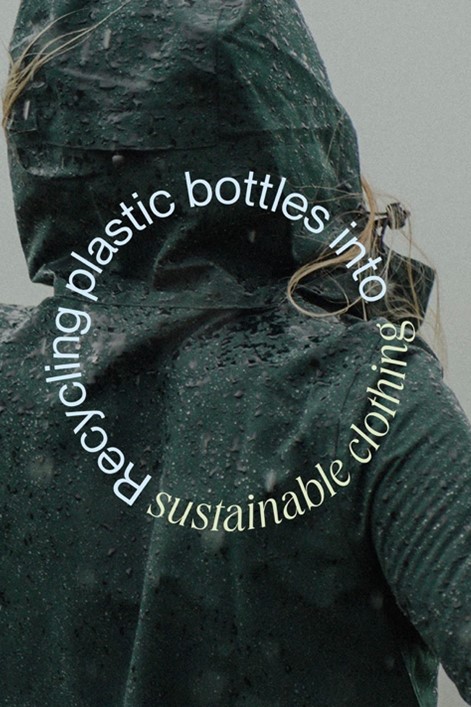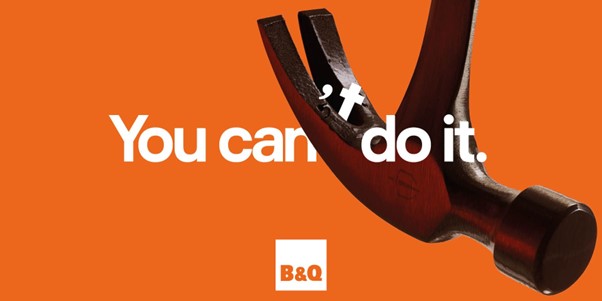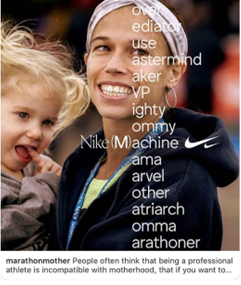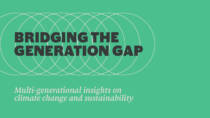Bridging the generation gap: insights on climate change and sustainability
By Sally Pritchett
CEO
Climate change is arguably the defining issue of our time. But how do people from different generations perceive this threat?
One of the key challenges we hear about from our community of communicators is how to effectively talk about sustainability. Many are concerned about falling into corporate washing or greenwashing traps, while others are unsure how to make their communications resonate with their audiences without resorting to doom-and-gloom narratives that risk spiralling into negativity and anxiety.
As workplaces become increasingly multi-generational, a new challenge also arises. Those who have grown up with a constant awareness of the need for societal change to tackle the climate threat are now working alongside those who only discovered the impact of poor natural resource management and the resulting climate crisis in their later years. It’s reasonable to expect that these different generations have very different perspectives on sustainability issues, and therefore, our communication strategies may need to be tailored accordingly.
Commonly held stereotypes suggest that Gen Z and Millennials are highly concerned about the environment and willing to make sacrifices for sustainability. In contrast, Gen X is perceived as less engaged with the issue and cynical about the capability for large-scale change. Meanwhile, Baby Boomers and Traditionalists are often stereotyped as not taking climate change seriously, or perhaps not even believing the science, prioritising economic growth over environmental concerns. If these stereotypes were true, how could we bring these different perspectives together and align a multi-generational workforce on a single company-wide mission towards a more sustainable future?
However, we know that stereotypes are often inaccurate, so to test these ideas we surveyed and interviewed individuals across the generations. Our research explores generational perspectives on sustainability and climate change. Understanding these nuances can help us as communicators to bridge the gap and inspire collective action.
So, how do different generations truly view sustainability, the climate crisis, and their influence around it? Let’s find out…
Generational perspectives on climate change and sustainability
Traditionalists
“I would say I am anxious for my children, grandchildren and great-grandchild.”
- Born before 1945, Traditionalists are aged 79 and older.
- They make up approximately 5-10% of the current workforce.
- On average, Traditionalists report becoming aware of the importance of the environment and the reality of climate change in their 50s.
- On a scale of 1-10, they rate their anxiety level around climate change as 7. This is the lowest rating, tied with Gen X and Gen Z.
- They believe the main causes of climate change are industry and transport emissions.
- Their top action to reduce climate change in the next decade is lowering emissions from transport, such as adopting electric vehicles.
- They felt that their generation could have recycled more and better-protected forests and other natural resources.
- Traditionalists didn’t use the terms ‘carbon’ or ’emissions’ and instead talked about pollution.
Baby Boomers
“I don’t think about [climate change] all the time. But it does make me anxious, not for me, but for my children and their children. The powers that be need to do something.”
- Born between 1946 and 1964, Baby Boomers are currently aged 60-78 years old.
- They make up approximately 30-40% of the current workforce.
- On average, Baby Boomers report becoming aware of the reality of climate change in their early 30s.
- Among all generations, they reported the highest levels of climate anxiety, rating themselves an 8 on a scale of 1-10.
- They identified the main causes of climate change as human nature and greed, an overreliance on fossil fuels, and high levels of industrial emissions.
- Their top actions to combat climate change are reducing or eliminating fossil fuel use and transforming transportation systems, such as electrifying vehicles, using biofuels, and improving public transport.
- When asked what their generation could have done differently to protect our planet, respondents were nearly unanimous in wishing for better education, and that industry and government should have listened to science and acted much more quickly.
“We were encouraged to try to do everything – gain an education, build a career, look after a family, travel, and more – all while it was still primarily the responsibility of women to manage these roles. It was nearly impossible to achieve all these things without relying on items that made this load easier, leading to a preference for convenience.”
Gen X
“We needed more education earlier about the environmental damage from our actions. We also inherited an oil/car-dependent culture.”
- Born between 1965 and 1976, Gen Xers are currently aged 48-59 years old.
- They make up approximately 35-40% of the workforce.
- On average, Gen Xers report becoming aware of the importance of the environment and the reality of climate change in their early 30s. However, there was a wide range, with some reporting learning in childhood or their teens, and others not until recent years when in their 50s.
- On a scale of 1-10, the average anxiety level is 7 (tied for the lowest with Traditionalists and Gen Z).
- Human nature and greed were clearly identified as the main causes of climate change. However, this age group included the largest number of respondents who did not believe in or overtly question the human impact on climate change.
- To reduce climate change in the next decade, they cited the reduction or ban of plastics, reducing reliance on fossil fuels, and decreasing consumer consumption as the most important actions.
- When asked what their generation could have done differently, they suggested that better education around climate change would have enabled and encouraged faster action.
“I’m very glad I don’t have children to hand this planet to – the guilt would be too much!”
Millennials
“No matter how much effort I make as an individual, it is a drop in the ocean compared to big polluters. It makes me feel hopeless and powerless.”
- Born between 1977 and 1995, Millennials are currently aged between 29-47 years old.
- They make up approximately 30-35% of the workforce.
- On average, Millennials report becoming aware of the importance of the environment and the reality of climate change in their early teens, though many reported learning about it as small children or felt that they grew up always knowing about it. This shows that it’s not just the youngest generations who grew up with the looming reality of climate change, but many Millennials who are now reaching middle-age, feel that they did too.
- On a scale of 1-10, their average anxiety level is 7.7, this is the second highest, just slightly lower than that of Baby Boomers.
- Millennials overwhelmingly cited callous human greed and selfishness as the main causes of climate change. Industry and government inaction were also common responses.
- To reduce climate change in the next decade, Millennials largely called for better support for renewable or green energy and a reduction in consumer consumption. There were also strong calls for governments to toughen up on industry by enacting stronger regulations, fines, and sanctions for those that resist change.
- When asked what their generation could have done differently, Millennials reported wishing they had acted sooner, through voting, speaking up, educating others, and protesting. There is also a clear sentiment of a feeling of powerlessness and believing that older generations still hold the capability to enact significant change.
- While Millennials wish they had acted sooner and sometimes feel powerless, they haven’t given up on finding solutions to the climate crisis. This generation proposed the widest variety of ideas to tackle climate change, including supporting green financing, renewable energy development, carbon capture technologies, and reducing consumption. Despite the challenge ahead of them, their determination to tackle this issue remains strong.
“We need to find a way to make people understand how it affects them personally otherwise they don’t care, frankly.”
Gen Z
“My generation are waking up to the long-term issues and hopefully will push for change in the future.”
- Born between 1996 and 2015, Gen Z is currently aged 9-28 years old.
- They make up a small percentage of the workforce, but this is set to rise to 30% by 2030.
- On average, Gen Zers report becoming aware of the importance of the environment and the reality of climate change at age 10, with many respondents citing learning about it in their early years of schooling.
- On a scale of 1-10, their average anxiety level is 7. Despite often being thought of as the most ‘anxious’ generation – they reported among the lowest levels of anxiety, tied with Traditionalists and Gen X.
- They identified the main causes of climate change as people’s lack of willingness to change and a lack of respect for our planet, as well as our heavy reliance on fossil fuels.
- To reduce climate change in the next decade, they called for investment and development in new green energy solutions and reducing or stopping the manufacture of plastic, particularly single-use plastics.
- When asked what their generation could have done differently, Gen Z respondents suggested that they needed to learn more about climate change and consume less.
- Contrary to stereotypes, Gen Z did not emerge as the activist generation in our research. Instead, were the most vocal about protesting and driving revolutionary change to address climate issues.
“I can’t have that much impact on it [climate change] or control over it so I try not to worry about it too much, plus lots of adults don’t seem to be that worried about it.”
How to communicate about sustainability issues across the generations
Our research shows commonalities and differences in how different generations view the climate crisis and sustainability issues. While high levels of anxiety cut across age groups, perspectives on causes, solutions, and personal control vary. To inspire collective action, communicators must move beyond stereotypes and tailor communications that reach across the five generations.
Avoid stereotyping and acknowledge shared concerns
Our findings show high levels of climate anxiety across all generations, contrary to stereotypes that older cohorts are apathetic or unaware. Gen Xers displayed the widest range of views, from deep concern to outright denial. Be prepared to address varying levels of awareness and scepticism.
Use familiar, relatable language
Avoid overly technical jargon. Within our respondents, Traditionalists did not use terms like “carbon” or “emissions”, preferring words like “pollution”. Tailor your language to resonate across all the generation’s lived experiences and understanding of climate change.
Prioritise education and awareness
Baby Boomers were nearly unanimous in wishing for better education, and many Gen Xers regretted not receiving better environmental education earlier in life. Gen Zers said they needed to learn more about climate change. Develop targeted campaigns to help fill knowledge gaps and address misconceptions.
Highlight actions they can take in their daily lives
Traditionalists feel their generation could have done more to recycle and protect natural resources. Gen X, Millennials and Gen Z all reported that they need to reduce consumer consumption. Emphasise practical steps that can be taken now.
Empower them to drive change within their spheres of influence
Despite reporting a feeling of powerlessness, Millennials have not given up and continue proposing solutions like green financing and carbon capture. Emphasise their ability to be changemakers by supporting and amplifying these solution-oriented mindsets. While some Millennials feel powerless against older generations, remind them of their collective voice and ability to influence through their roles as employees, consumers and advocates.
Read more
We’re raising our voice on multi-generational workforces, helping you to understand the challenges and opportunities a multi-generational workforce presents and how your business can create an inclusive workplace for #GenerationAll.
Bridging generational divides for collective climate action
While generational divides on climate change can make for attention-grabbing headlines, our research shows there is more that unites us than divides us. When Time magazine named Greta Thunberg their Person of the Year in 2019, they called her a “standard bearer in a generational battle, an avatar of youth activists across the globe.” However, exaggerating these generational differences is at best unhelpful, and at worst, dangerous.
Our findings clearly show that climate anxiety cuts across the generations, dispelling stereotypes of older generations being apathetic or unaware. Traditionalists and Baby Boomers alike express deep concerns about the planet’s future, often rooted in worries for their children and grandchildren. Meanwhile, younger cohorts like Millennials and Gen Z remain determined to find solutions, despite sometimes feeling powerless against entrenched systems and inaction.
Effective communications must move beyond what divides the generations and instead bring people together around shared values and a collective sense of responsibility. Rather than continuing divisive narratives, we need to amplify the positive stories that inspire change, continue prioritising education to bridge knowledge gaps, and tailor our messaging to resonate with each generation’s lived experiences.
Stereotypes are not only inaccurate but counterproductive in rallying a unified front against the climate crisis. By acknowledging our common anxieties, proposing tangible actions, and empowering all generations to drive change within their realms, we can harness the power of our diversity and work towards a more sustainable future for all.
About the data
This article is based on data collected from a total of 90 respondents through a combination of 63 online surveys and 27 conducted interviews by Something Big employees. The data collection period spanned from April to May 2024. The survey was shared by Something Big team members via public social channels, across business communities and through personal relationships. The demographics and backgrounds of respondents are varied; however, they will be influenced by the network and connections that exist around our business.
The respondents were categorized into five generational groups as follows:
- Traditionalists (79+): 7.78%
- Baby Boomers (60-78): 14.44%
- Gen X (48-59): 31.11%
- Millennials (29-47): 27.78%
- Gen Z (9-28): 18.89%
The gender distribution among the respondents was recorded as:
- Woman: 50%
- Man: 24.44%
- Genderfluid/Genderqueer: 1.11%
- Non-binary: 0%
- Prefer not to answer: 0%
- Unknown / not recorded: 24.44%
How to effectively communicate with a multigenerational workforce
By Sally Pritchett
CEO
How can you help your communications resonate with a multigenerational workforce?
In today’s world, people are living and working for longer. For the first time in history, five generations are currently in the workforce, each with their own preferred ways of working and communicating.
While a multigenerational workforce brings diverse skills, experiences and perspectives, it also presents challenges – one of which is communication. While it’s important not to make assumptions and remember everyone has their own preferences, there are noticeable differences between each generation’s communication style. For example, Baby Boomers typically prefer a balance between email, phone calls and face-to-face communications, whereas Gen Z typically prefer direct personal communication and short, digestible digital messages.
With each generation valuing different communication styles, ensuring everyone feels informed, heard, and engaged is crucial. But as a communicator, what can you do to help your communications resonate with a multigenerational workforce?
Use various communication channels
Consider the different communication channels available to you and how you can use these to reach employees better. For example, if you are communicating a company-wide update via email, could you share this on other internal channels too? If appropriate, condense your email down and share via Teams or your internal social channel as well to help keep everyone informed.
Give employees flexibility on how they communicate with you
When it comes to communicating with employees, it’s not just one-sided – you should give colleagues the opportunity to share their thoughts, provide feedback, and raise concerns in ways that they feel comfortable. Where possible, consider offering employees different ways to communicate with you. For example, if you’re asking employees to contribute their ideas on a project during a meeting, you could also let them share their thoughts via email afterwards.
Balance digital and in-person communications
Using the right balance of digital and in-person communications can help you better engage employees with different preferences and ways of working. However, it’s important to make sure you are using the best approach for what you are trying to achieve.
While messaging platforms such as Teams are great for quick updates, it may be better to have in-depth discussions or more personal conversations in person. When communicating virtually with employees, always make sure you are clear and concise to ensure your communications are accessible to all.
Continue reading:
If you’re looking to develop engaging communications that resonate with a multigenerational workforce, we can help.
Navigating the multi-generational workforce within SMEs
By Sally Pritchett
CEO
In this video, we navigate the challenges of a multi-generational workforce within SMEs, offering practical solutions to overcome communication hurdles.
With up to five generations present in the workforce – as Gen Z enters working age and discussions about a new pension age of 71 begin – the age gap between your youngest and oldest employees is widening, presenting both a challenge and an opportunity.
In this recent session tailored specifically for HR leaders within SMEs, we addressed the challenges stemming from an increasingly age diverse workforce. From talent attraction to productivity, company culture, and fostering diversity, we discussed practical insights and real-world solutions.
We examined the critical issue of retaining experienced employees to avoid ‘history and wisdom walking out the door’, particularly creating a challenge in sectors such as healthcare, where invaluable knowledge is at risk of being lost with an ageing workforce and retiring staff. Additionally, we explored the difficulties many businesses face in recruiting, and then retaining, Gen Z talent.
We would like to thank Daniel Broome, Strategic Director from People Puzzles, for joining the session and sharing his perspectives. If you’d like to connect with Daniel, please reach out to him on LinkedIn.
Five ways to improve collaboration within a multigenerational workforce
By Sally Pritchett
CEO
Learn how to foster collaboration across generations in the workplace with these five practical strategies.
For the first time in history, five different generations are working together. While having a range of ages in the workplace brings diverse perspectives, ideas, and experiences, it also presents new challenges that employers haven’t faced on this scale before.
One of the biggest challenges multi-generation workforces present is around communication. With each generation typically having different communication styles, communication barriers are forming between employees. These barriers can impact employees forming positive work relationships, resulting in reduced collaboration and productivity.
According to the London School of Economics, employees with age gaps of more than 12 years with their managers are 1.5 times more likely to report lower productivity. While this could be partly down to different ways of working and communicating, negative stereotypes and perceptions could also play a part in employees not working together.
With the impact of a multi-generational workforce already being felt in many businesses, what can your business do to help improve collaboration between employees?
Help employees understand generational differences
Bridging the gap between different generations starts with helping employees understand what generational differences look like in the workplace. If employees don’t know how their colleagues prefer to communicate or why they work in a certain way, they could make assumptions or stereotype someone based on their age. Educating your workforce on generational differences can help prevent employees from making these harmful stereotypes, which in turn can help to improve collaboration and bridge the productivity gap.
Create an environment of open communication
Creating a safe environment where discussing ideas and sharing different perspectives is encouraged can help nurture a more collaborative workplace culture. When employees feel safe to speak up and share their thoughts, everyone gets a chance to bring their unique experiences to the table and learn from others. This can help employees work together more productively as they can learn from one another while working to achieve a common goal.
Encourage skills and knowledge sharing
While a multigenerational workforce presents certain challenges, it also brings huge opportunities. One of which is the opportunity for skills and knowledge sharing. While older generations may have extensive knowledge from years of experience in a particular industry, younger generations may bring new perspectives on ways to do things into the workforce. Encouraging employees to collaborate and share this knowledge not only helps employees develop their own skills – it can also lead to better creativity and problem-solving.
Take practical steps to support employees working together
Alongside educating employees on generational differences, providing more opportunities for connection and collaboration can help bring together employees from different generations. For example, skills workshops and knowledge-sharing sessions are a great way to get employees together to learn from one another.
With many businesses now working in a hybrid way, online collaboration is more important than ever. However, some employees may not feel confident using online tools and software. Offering training and support to all employees ensures everyone can contribute in this way, improving online collaboration between employees.
Introduce mentoring (and reverse mentoring)
Mentoring is a great way to bring employees from different generations together. It gives employees an opportunity to build positive, supportive relationships that benefit both the mentor and mentee. As well as introducing traditional mentoring opportunities, you should also consider reverse mentoring – where employees early on in their careers mentor more senior employees.
By giving employees opportunities to better understand and learn from one another, mentoring can help build respect between employees from different generations, break down stereotypes, and encourage open communication.
Ultimately, the key to improving collaboration is going beyond stereotypes and encouraging flexibility in working practices. Enabling different communication methods within the workplace and helping your workforce better understand one another can help employees collaborate more effectively and find good compromises that work for both parties.
Continue reading:
If you want to start the conversation about collaborative ways of working with your employees, we can help create engaging communications that resonate with every generation within your workforce. Talk to us.
Tune In: Uniting the multi-generational workforce

Our CEO Sally Pritchett will be joined by two expert speakers for an insightful exploration into the voices of the multi-generational workforce – uncovering strategies to improve relationships, enhance communication, and boost productivity.
Join the guestlist: https://www.tickettailor.com/events/somethingbig/1216229
Unraveling ageism and workplace age discrimination
By Sally Pritchett
CEO
Ageism is the most common form of workplace discrimination, but it is not often talked about. It’s time for that to change.
With five different generations working together for the first time, age discrimination is something that is particularly affecting both younger workers who are starting their careers and people aged 50 and over.
But what can we do to help as communicators? It starts with increasing our understanding of what age discrimination is, and what we can do to create safer, healthier and happier workplaces for employees of all ages.
What is age discrimination?
Age discrimination occurs when someone is unfairly disadvantaged based on their chronological age. In the UK, age is a protected characteristic set out in the Equality Act.
Ageism refers to treating someone unfairly due to their age, including negative stereotypes, prejudice, or discrimination. In the workplace, this discrimination often manifests through biased hiring practices, limited advancement opportunities, and unequal treatment.
One in three people in the UK report experiencing age prejudice or age discrimination.
Centre for Ageing Better
Typically, ageism is U-shaped across a person’s lifetime, with the youngest and oldest workers most likely to suffer from age-based discrimination.
Despite one in three people in the UK reporting experiencing age discrimination, very few cases are prosecuted under the Equality Act, indicating a lack of seriousness in addressing this issue.
In the UK, like across much of the world, our population is undergoing a massive age shift. By 2050, one in four people will be over 65. Among countries with ageing populations, raising retirement ages and extending working lives is widely viewed as an economic necessity. This means that age diversity in the workplace is set to continue to widen.
Age discrimination against older workers
Older workers, including Gen X (those born between 1965-1976), Baby Boomers (1946-1964) and Traditionalists (1945 and earlier) often report encountering age-related stereotypes and myths that can undermine their confidence and capabilities.
These negative stereotypes influence not only how people are treated by others, but also how people view their own ageing. Stereotypes like technological ineptitude or resistance to change can marginalize the contributions of older workers and restrict opportunities for their career progression.
The workplace is an all-too-common setting for ageism, and negative attitudes towards older workers risk harming not just older people but the economy at large. With a third of the workforce now over 50, ageism risks jeopardising business success and economic growth.
A study found that 52% of over 50s who have searched for work in the past five years believe their age made employers less likely to hire them, exacerbating feelings of exclusion and diminishing morale in the workplace.
People in their 50s and 60s most commonly experience age discrimination in the workplace.
Centre for Ageing Better
In another recent study, 11% of workers over the age of 50 said they have had comments or ‘jokes’ from colleagues or managers relating to their age, 4% said they have considered leaving their job because they feel they are discriminated against because of their age, and 29% don’t think their workplace values older workers.
Negative age stereotypes are also associated with worse health outcomes, including a reduction in longevity and an increased risk of dementia. Along with age discrimination in society, internalised ageism can discourage older workers from embracing the behaviours and opportunities that would enable them to fully participate within the workforce.
Age discrimination against younger workers
Going back at least 2,500 years, there’s a longstanding tradition of older generations pointing fingers at younger people for society’s troubles. Now, as Gen Z (those born between 1996-2015) steps into the workforce, they find themselves bearing the brunt of these accusations, just like Millennials (born between 1977-1995) did before them.
Younger employees can be perceived as lazy, less reliable, less organised, selfish, and poorly motivated simply because of their age. This can result in them being overlooked for training opportunities, greater responsibilities, and promotions. Younger workers also tend to receive lower pay and benefits relative to similarly experienced older workers and tend to be at greater risk of being laid off during a downturn.
A study across the US, UK, France, and Germany found that 52% of younger employees had witnessed or experienced ageism in the workplace
Celebrating a multi-generational workforce
Communicators have a pivotal role to play in breaking down barriers and creating workplace cultures where people of all ages are valued, empowered, and able to flourish. By challenging age-related biases and fostering an environment of respect and appreciation, organisations can look to unlock the full potential of their workforce.
One in five employers think age discrimination occurs in their organisation.
Centre for Ageing Better
If you’re looking for support in communicating with employees across diverse generations and building a cohesive culture regardless of age, talk to us. Together, we can break down barriers and create workplace cultures where people of all ages are valued, empowered, productive and able to flourish.
Join the conversation
Tune In: Uniting the multi-generational workforce

Our CEO Sally Pritchett will be joined by two expert speakers for an insightful exploration into the voices of the multi-generational workforce – uncovering strategies to improve relationships, enhance communication, and boost productivity.
Join the guestlist: https://www.tickettailor.com/events/somethingbig/1216229
Unifying the multi-generational workforce
By Sally Pritchett
CEO
We're raising our voice on multi-generational workforces. Find out how you can create an inclusive workplace for #GenerationAll.
Workplaces are becoming more multi-generational – for the first time, five different generations are working together. From Gen Z to traditionalists, each generation brings its own perspectives, experiences, and preferences to the workplace. Understanding these differences can help us create generationally inclusive workplaces where everyone feels like they belong.
These generational differences, combined with negative stereotypes and misconceptions, are affecting employee relationships. However, only 6% of organisations strongly agree their leaders are equipped to lead a multi-generational workforce effectively. Businesses need to get ready to support a changing workplace to ensure generational differences positively impact relationships, communication and productivity.
For the next month, we’re raising our voice on multi-generational workforces. We’ll be helping you understand the challenges and opportunities a multi-generational workforce presents and how your business can create an inclusive workplace for #GenerationAll.

Expand your knowledge
Unraveling ageism and workplace age discrimination – Ageism is the most common form of workplace discrimination, but it is not often talked about. It’s time for that to change.
Five ways to improve collaboration within a multigenerational workforce – Learn how to foster collaboration across generations in the workplace with five practical strategies.
Join the conversation
Tune In: Uniting the multi-generational workforce

Our CEO Sally Pritchett will be joined by two expert speakers for an insightful exploration into the voices of the multi-generational workforce – uncovering strategies to improve relationships, enhance communication, and boost productivity.
Join the guestlist: https://www.tickettailor.com/events/somethingbig/1216229
Raising the profile of HR: strategies for shaping perception and impact
By Sally Pritchett
CEO
HR has never been more essential. But how can you elevate the profile of HR to drive transformative change, foster a thriving organisational culture and begin to change the professional stereotype?
With global uncertainty – conflicts, climate change, and economic struggles – employees are navigating tough times. They’re also increasingly seeking a stronger sense of belonging and purpose in their work. On top of this, challenges such as multi-generational workforces, a healthcare system under extreme pressure, and a growing burnout and mental health crisis are compounding the difficulties for HR. And ever present are the rapid technological changes and heightened concerns about AI and automation. These all combine to make HR’s role more vital – and complex – than ever.
Never more has HR needed to be positioned as a strategic partner, contributing valuable insights to decision-making.
Examining the reputation of HR
On the 19th April, we were delighted to host a virtual discussion for HR leaders focusing on raising the HR profile both externally and internally. Our CEO and Co-Founder, Sally Pritchett was joined by expert in HR PR, Kay Phelps, and together they discussed the impact of the negative media narrative on HR.
Kay shared a range of recent headlines from ‘What’s the point of HR?’ (FT Podcast) and ‘How the HR monster destroyed the workplace’ (Telegraph) to the rather depressing ‘Why everyone (still) hates HR’ (TLNT) and ‘HR viewed as least productive department by employees’. (HR Magazine).
Kay and Sally reflected on the adage ‘sticks and stones can break my bones but words can never hurt me’ suggesting that in this case, it appears that words are hurting the professional reputation of the HR function with 83% of HR professionals believing that HR is suffering from a tarnished reputation (Cezanne/HR Ninja research) and 54% of HR professionals feeling they rarely or never receive recognition for their efforts.
But there’s evidence that the damage is far worse than purely this tarnished reputation within organisations with poor and ever-diminishing investment in HR clearly out of balance with other functions.
Average HR function spend (as a percentage of revenue) stands at just 0.76% in comparison to other better-funded functions like Finance achieving 1.30%, IT at 3.25% and even marketing (a previously also function challenged by its reputation as a colouring in the department) now achieving a whopping 7.5%. (Gartner research)
Worst still, this underfunding is potentially set to worsen as 25% of 2023 HR budgets decreased year on year, (adding to a decrease of 12% in the previous year). (Fortune)
Strategies for shaping perception and impact
HR’s role in the business is expanding rapidly, encompassing critical areas such as workplace culture, diversity, equity, and inclusion (DEI), employee well-being, and talent acquisition. This includes fostering a sense of inclusion, belonging, and psychological safety, as well as aligning the workforce with the organization’s purpose and creating fulfilling roles. HR is also tasked with navigating the complexities of hybrid working arrangements, engaging a diverse workforce, and ensuring a seamless employee experience from start to finish. Furthermore, HR plays a pivotal role in talent retention amidst a competitive landscape, bridging generational gaps, supporting executive development, and preparing for the AI-enabled future of work. Amidst organizational transformations, HR juggles these responsibilities alongside redundancy programs, restructures, and job redesigns. The scope of HR’s remit is ever-expanding.
With HR being the least funded function and investment headed in the wrong direction whilst the remit and complexity of strategic HR’s role growing, Sally and Kay were keen to create a circuit breaker, seeking practical and tangible ways to help HR leaders move forward.
Sally reflected on a similar challenge a decade ago in her career, supporting a shift in the reputation of a marketing function including successfully increasing team size, budget and strategic profile within the business after three years of educating the wider business, shifting narrative from output (delivery) to impact (the difference made).
Kay and Sally shared their advice on building personal profiles, leveraging external media, engaging in the HR award landscape, educating their internal stakeholders and demonstrating their strategic contribution.
To find out more about their advice, watch the video below, or book a call to talk about your challenges with Sally here.
Championing workplace health, wellbeing and safety
By Sally Pritchett
CEO
In this article we share insights for internal communications leaders on a quest to move the dial on health, wellbeing and safety conversations.
The conversation on health and safety at work has been shifting for some time now. The emphasis used to be on safety, prioritising physical injury prevention, such as addressing slips, trips, falls, proper lifting techniques, and the importance of PPE, or adherence to safety protocols for tasks at heights. However, there has been a notable shift towards a more comprehensive perspective, encompassing not only physical safety but also considerations of health and wellbeing.
At Something Big our mission is to make a meaningful difference to workplaces, making them fairer, healthier and happier for all. In this article, we’re unraveling a little more on what we might mean by a ‘healthier’ workplace.
What is a healthy workplace?
We often refer to an organisation only being as healthy as its people, so it’s great to unravel what that might look like in the context of a world where according to the World Economic Forum we’re living longer but not necessarily healthier. Interestingly wealth has often also been seen as a measure of health, the thought that those with money could therefore afford better food, lifestyles and would automatically thus be healthier. We now know that wellbeing is not this linear.
If we narrow health down to the workplace we can see some clear buckets of health and wellbeing including:
-
Physical injuries (perhaps the heartland of HSE)
-
Cancer (an area of opportunity for employers to provider better support)
-
Cardiovascular disease (the largest global killer according to the WHO)
-
Respiratory conditions
-
Macular degeneration
-
Mental health issues (a topic of much greater awareness in the past few years)
When we consider these six themes it’s clear that much of our HSE effort in the workplace focuses in on a small part of the wider topics.
Of course, the nature of risk varies depending on the industry in which an organisation operates. Physically demanding industries may understandably prioritise injury prevention, while desk-oriented businesses are increasingly focused on mental wellbeing.
It may be useful to consider the nature of your workforce to spot who may need what support:
-
Outdoor workers who may have physically demanding roles
-
Indoor workers, desk-based workers, in particular those working from home may now have very sedentary or lonely roles
-
Workers in high-stress roles, like those with abusive customers or in traumatic situations
-
Vulnerable workers, like pregnant people, older adults, or employees with disabilities
-
Workers from challenging demographics, such as those facing language barriers or discrimination for example.
Looking at the workforce through this lens enables communications and support to be more tailored and as a result more effective.
Whichever sector an organisation operates in or whatever the makeup of their workforce, it’s critical that organisations drive the health, wellbeing and safety agenda. Here are top three tips for successfully leading the wellbeing conversation in the workplace:
1. Avoid the ‘one and done’ approach
Whilst celebrating awareness days like World Day for Safety & Health at Work are great, try to avoid big campaigns being the only time in the year to communicate with the workforce. We find creating sustainable and meaningful awareness and driving healthy cultures requires a rumble and roar approach. There needs to be year round, always on, communication supported by big campaign ‘roars’ a couple of times a year to be the most effective.
2. Make your messaging clear (and then repeat it often and consistently)
There is such truth in the quote “If I’d had more time, I would have written a shorter letter” but any communicator will know that creating simplicity and clarity of message are the hardest parts of their role. With multiple messages being crammed into every communication the role of Chief Editor is a critical one. The most effective communications are well-positioned, quick, to the point and clear on what the audience need to think, feel and/or do. The well-established single-minded proposition approach applies so well here and can create a disciplined approach to HSE messaging.
To ensure consistency of message, an audit of how an employee may be communicated to during their work is really useful here. From their recruitment process to inductions and onboarding, through to daily supervisor communications or annual refreshers, it’s important to ensure that the same message is being delivered.
3. Avoid empty communications
‘Empty communications’ is a phrase we refer to a lot, alludes to the words not backed up by actions. In the case of HSE, ’empty communications’ would be walls plastered with ‘Safety First’ posters whilst only delivering a first aid kit, limited PPE and an acceptance of stressed, burning out employees. How do Internal comms professionals avoid this disconnect? By working closely with stakeholders to ensure that what their communications are expecting / asking of employees is realistic and practical.
Championing workplace safety – an inside look at a multi-award-winning communications program
In today’s complex landscape, workplace safety is more important than ever. In this concise session, you will discover the innovative strategies and practices that go into creating a multi-award winning health and safety program.
In this live showcase our Commercial Director, Felicity Allen and Creative Director, Sam Hennig, explored the global DHL Supply Chain ‘Our Safety is in Our Hands’ program. This program, winner of Best Frontline Campaign at the Simplys and Platinum at the MUSE Creative Awards, is currently a finalist for the 2024 Safety and Health Excellence Awards in the Best Campaign category.
If you’re looking for a health and safety campaign that reaches the frontline, elevates safety standards within your organisation, protects your people and fosters a culture of wellbeing – let’s talk.
5 ways to engage employees with your sustainability communications
By Sally Pritchett
CEO
Improve employee engagement with your sustainability communications with these simple, but effective, strategies.
Living a more sustainable life requires us to change our behaviour, make ongoing commitments and sometimes make sacrifices – but despite all this, it’s not always easy to see the rewards of our hard work.
When we recycle or use the circular economy, the planet and the headlines don’t change. We’re still hearing that climate change is going in the wrong direction, despite the collective action we are all taking. And that’s why we’re starting to see more people experiencing sustainability fatigue.
What is sustainability fatigue?
Simply put, sustainability fatigue is a phrase that describes how people feel when, despite making choices that are better for the planet, they constantly see negative environmental news and start to think the changes they are making aren’t making a difference. So they start to make less effort or even give up altogether.
The challenges of sustainability fatigue
Sustained behaviour change is not easy
Humans are psychologically wired to value the things we already have more than those we don’t have. When it comes to encouraging people to embrace more sustainable lifestyles, asking them to let go of something they’re emotionally connected to is a challenge.
Making changes might not be cheap
Humans are facing a dilemma; they want to make changes that positively impact the environment but can’t always afford to do so. With 21% of people saying it is too expensive to make changes, this could be stopping people from living their lives as sustainably as they would like to.
The extent of change required is overwhelming
As people ocellate between taking proactive action and feeling overwhelmed by the lack of progress, it’s no surprise that climate anxiety is rising – more than 80% of British adults say they have some level of concern about climate change. These feelings of concern are as real as climate change itself, so it’s no wonder people aren’t sure where to start, what to believe or where to focus their action.
Whilst people may be facing these challenges in their personal lives, sustainability has scaled the corporate agenda. And many businesses are doing more than ever to have a positive impact on the environment. But have you considered how your communications could provide support to your employees’ personal sustainability journeys?
Strategies for engaging employees with your sustainability communications
-
Change the tone
Remember, people know what’s going on, and many are already anxious. This is especially true for the younger generations who are starting to enter the workforce, with 31% of 16-24 year olds saying they are very worried about climate change. It’s time to try ditching the doom and gloom and lightening up communications, balancing important information with a little fun to raise awareness.
Strategy: Try interviewing your subject matter experts with quick-fire questions or turning educational communications into a quiz-style interview. Giving a voice to real people around your business can help make changes feel achievable and realistic – people need to hear the authentic truth about how colleagues who are similar to them have managed to change their behaviour.
-
Get (and keep) talking
It’s more important than ever to keep the conversation going. Communication can reduce anxiety by reassuring employees that your organisation is taking sustainability seriously. Keep employees consistently in the loop with the progress you’re making and bring to life all the achievements (and failures) big and small.
Strategy: Consider whether you could help your Head of Sustainability or key subject matter experts to publish a diary, vlog or blog to continually share their updates.
-
Get competitive
As humans, we all fall for a bit of gamification, in and out of the workplace. With 82% of employees say that game elements help provide a greater sense of meaning and purpose in their workplace, gamification can be about more than just a bit of fun.
Strategy: How about challenging different offices, locations or departments to see who can collect the most recycling, reduce their digital storage by the most or carry out the most volunteering?
-
Empower your employees
Enabling action is a great way to reduce anxiety and get change happening. How you empower your employees will depend on the kind of organisation you are, but remember your front-line workers might have the answers to make big changes.
Strategy: Try brainstorming ways your employees can practice more sustainable activities at work, from switching off lights to having a digital declutter, give them tangible things they can take action on and possibly implement at home too.
-
Start a movement
Building a growing community of employee advocates and champions is a great way to build up momentum. With 66% of employees rating employee resource groups as an effective way to foster a sense of community, this can provide an opportunity for employees to bond and engage, as well as taking the benefit of taking positive action.
Strategy: Sustainability employee resource groups or Green Teams are a great source of new ideas, from how to reduce waste to setting up recycling hubs, and internal employee swap shops to creating an onsite vegetable roof garden.
If you’re in search of ESG communication experts to engage employees with sustainability communications, then look no further – you’ve found us! We would be delighted to hear from you to explore the possibility of partnering together.
Exploring fresh graphic design in creative communications
By Sally Pritchett
CEO
Explore the freshest trends in graphic design and find inspiration to create communications that connect with your audience.
As spring is blooming all around us, there’s no better time to infuse your creative communications with the spirit of renewal and growth. In this article we’re sharing what’s been inspiring us lately and examining some of the design trends we’re excited to see.
Sustainability and purpose-driven branding
Sustainable design is not a trendy, niche approach, it’s fast becoming a core principle. Consumers are looking for brands that align with their values and have a clear social or environmental mission. Brands that can effectively communicate their purpose and demonstrate their commitment to making a positive impact are likely to resonate. Customers are placing more value on products and services that prioritise sustainability, with studies finding that 81% of consumers believe brands should actively work to protect the environment.
From a design style perspective, we’re seeing a lot more thought go into packaging. Not just classic recyclable material and eco postage, but packaging being reusable or rethinking it by giving it a second life.
Sustainability conscious styling is starting to shift away from cliche ‘green’ to using a wider palette of nature through muted blues, beige and pinks to represent sustainability alongside the classic textured, earthy feel.
 Amble Outdoors | Sustainable clothing
Amble Outdoors | Sustainable clothing
As well as seeing these visual changes, the messaging is diving deeper. As a more well-informed audience which has growing concern over climate change and other environmental issues, consumers are increasingly looking for brands that prioritise sustainability. Messages and campaigns are bold and calling people out when they’re greenwashing or contributing to negative sustainable practices, working towards a force for change.
Make My Money Matter | Oblivia Coal Mine
The continued rise of AI
AI has made a huge impact on the marketing world over the last year. While the creative industry may feel under pressure from generative AI tools, it has also never felt so full of potential and scope for growth. AI is streamlining the design process, providing insights and generating multiple styles quickly. And AI is not going anywhere! AI is only going to get bigger and better, especially as us as humans learn to control it and manipulate it.
In this recent survey by It’s Nice That, 83% of creatives in the industry are already using AI tools. There are still ethical concerns around bias – which still need a human eye to carefully consider outputs – and legal concerns around plagiarism but the technology will undoubtedly continue to improve.
 Midjourney outputs
Midjourney outputs
Embracing nostalgia
Fashion repeats itself every twenty years or so, and this holds true in design too. The content of nostalgia marketing changes with the generations, as each generation has different cultural references. Gen Z may look to cultural references from the ’90s or early ‘00s, whereas Gen X or older millennials might feel nostalgic about the ’80s and its cultural touchpoints.
We have seen a huge re-emergence of ’90s inspired designs stemming from the iconic Barbie and Mean Girls movies allowing many of us to embrace the childhood nostalgia. This is paving the way for vibrant colours, abstract shapes, funky patterns, and scrapbooking to name a few. These design styles create an emotional bond with the audience, this especially aligns with Gen Z’s growing digital fatigue and their desire for meaningful experiences and authenticity.
Cadburys | Yours for 200 years
Bold type
Sometimes text needs to do the talking. In a world where there is so much visual information thrown at us and video/social media can be so intrusive, a simple message is effective. More campaigns are using simple type to tell the message and make an impact. Simplicity is key. Clean imagery is being used but enhanced by the typography.
 B&Q | You can do it
B&Q | You can do it
Inclusive design
Inclusive design that is both diverse and accessible has rightly become a staple. Ranging from high-contrast graphics, clear typography, alt text for images, and diverse and inclusive messaging.
Inclusive design enables us to talk to global audiences, breaking down barriers and challenging stereotypes.
 Nike | This athlete isn’t just an athlete she’s a mother too.
Nike | This athlete isn’t just an athlete she’s a mother too.
Impactful communications that connect with people
It’s clear that the world of graphic design is always changing and we’re seeing exciting trends shaping the way we communicate.
But amidst all this change, one thing stays the same: our commitment to making impactful designs that connect with people. Whether it’s telling your brand’s story or spreading a message, we’re here to help. If you’re looking to get cut through with your creative communications, reach out to us. Let’s work together to make something that makes a lasting impression.










